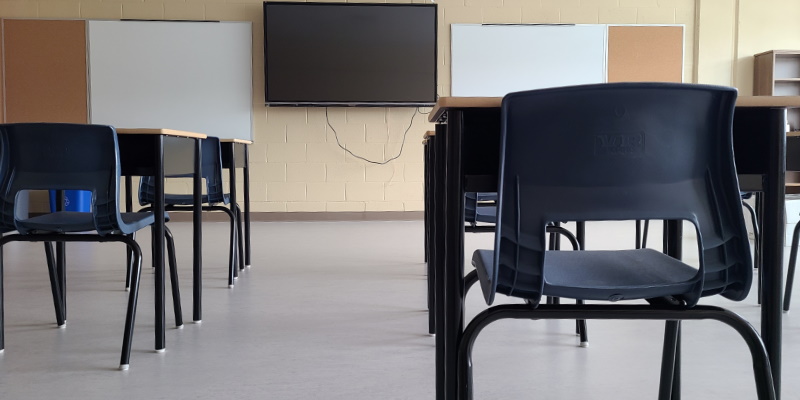How Education Technology is Changing Classrooms Worldwide

The global classroom is undergoing a profound metamorphosis, driven by the rapid integration of education technology. From AI-powered learning platforms to immersive virtual environments, digital innovation is reshaping how knowledge is delivered, absorbed, and assessed. This transformation is not confined to affluent districts or elite institutions—it is permeating rural schools, underserved communities, and multilingual classrooms, democratizing access and redefining pedagogy.
Personalized Learning and Adaptive Instruction
One of the most significant shifts in modern education is the move toward personalization. No longer bound by rigid curricula, students now engage with content tailored to their pace, interests, and cognitive profile. Adaptive learning systems analyze performance in real time, adjusting difficulty levels and recommending supplementary materials to reinforce comprehension.
This individualized approach fosters autonomy and deepens engagement. Learners are empowered to explore subjects beyond the textbook, guided by intelligent algorithms that respond to their evolving needs. Teachers, in turn, gain actionable insights into student progress, enabling targeted interventions and differentiated instruction.
Artificial Intelligence and Intelligent Tutoring
Artificial intelligence has emerged as a silent co-teacher in many classrooms. Intelligent tutoring systems simulate one-on-one instruction, offering hints, feedback, and scaffolding based on student responses. These platforms mimic the nuance of human guidance, bridging gaps in understanding and reinforcing mastery.
Beyond tutoring, AI streamlines administrative tasks—grading, attendance tracking, and lesson planning—freeing educators to focus on relational and creative aspects of teaching. Predictive analytics also help identify at-risk students early, allowing for timely support and resource allocation.
Virtual Reality and Experiential Learning
Immersive technologies are revolutionizing experiential learning. Virtual reality transports students to ancient civilizations, molecular landscapes, or distant planets, transforming abstract concepts into tangible experiences. This sensory engagement enhances retention and stimulates curiosity.
Augmented reality overlays digital information onto physical environments, enriching field trips, science labs, and art studios. These tools foster spatial reasoning and interdisciplinary thinking, preparing students for careers in architecture, engineering, and design.
Global Collaboration and Cross-Cultural Exchange
Digital platforms have dissolved geographic boundaries, enabling students to collaborate across continents. Virtual exchange programs, joint research projects, and multilingual discussion forums cultivate global citizenship and intercultural competence.
This connectivity nurtures empathy and broadens perspectives. Students engage with diverse viewpoints, challenge assumptions, and develop nuanced understandings of global issues. The classroom becomes a microcosm of the world, fostering dialogue and diplomacy.
Equity, Accessibility, and Inclusive Design
Technology has the potential to level the educational playing field. Screen readers, speech-to-text tools, and customizable interfaces support learners with disabilities. Multilingual platforms accommodate non-native speakers, while offline access ensures continuity in low-bandwidth regions.
Inclusive design principles prioritize usability for all. Fonts, colors, and navigation are optimized for clarity and comfort. Content is modular and multimodal, catering to varied learning preferences. These considerations affirm the dignity and potential of every student.
Teacher Empowerment and Professional Development
Educators are not passive recipients of technology—they are its architects and curators. Online communities, webinars, and certification programs equip teachers with the skills to integrate digital tools effectively. Peer collaboration fosters innovation and resilience.
Professional development is increasingly personalized. Microlearning modules, gamified training, and AI-driven coaching adapt to individual goals and schedules. This flexibility supports lifelong learning and elevates the teaching profession.
Assessment Evolution and Data-Driven Insights
Traditional assessments—multiple-choice tests and timed essays—are giving way to dynamic evaluations. Portfolios, simulations, and project-based assessments capture a broader spectrum of skills, including creativity, collaboration, and critical thinking.
Data analytics provide granular insights into learning trajectories. Dashboards visualize progress, highlight misconceptions, and inform instructional decisions. This feedback loop enhances transparency and accountability, aligning assessment with authentic learning.
Ethical Considerations and Digital Citizenship
With great innovation comes great responsibility. The digital classroom must navigate issues of privacy, equity, and ethical use. Students must be taught to discern credible sources, respect intellectual property, and engage respectfully online.
Digital citizenship curricula address cyberbullying, misinformation, and screen time management. These lessons cultivate integrity and resilience, preparing students to navigate the complexities of the digital age with discernment and empathy.
Future Horizons and Educational Paradigms
The classroom of tomorrow will be fluid, interdisciplinary, and learner-centric. Blockchain may revolutionize credentialing, while neurotechnology could personalize instruction at the cognitive level. Gamification will continue to motivate, and AI will refine pedagogy with surgical precision.
Yet amid these advancements, the human element remains paramount. Technology must amplify—not replace—the relational core of education. Empathy, curiosity, and mentorship will continue to define transformative learning experiences.
A Renaissance in Learning
The integration of digital innovation into education marks a renaissance in learning. It reimagines the classroom as a dynamic, inclusive, and globally connected space. As technology evolves, so too must our commitment to equity, ethics, and excellence.
In this new era, education is not confined by walls or timetables. It is a living dialogue—between student and teacher, between cultures, between past and future. And in that dialogue, the seeds of possibility are sown.





